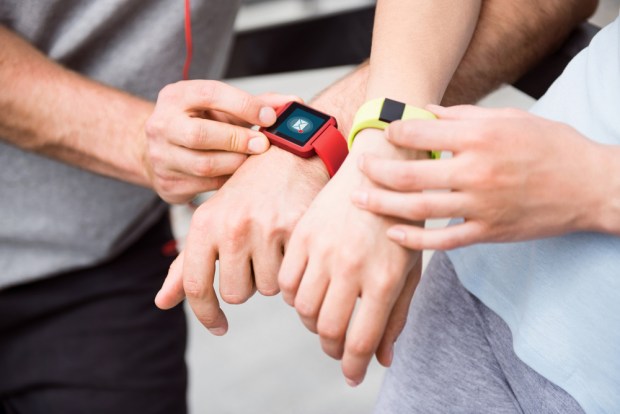Will Kids Be Key To Cracking The Wearables Code?

The Fitbit Ace, the wearable company’s latest $100 offer geared specifically to children, is officially out on the market. Designed for children eight and up, the product, according to reviews in The Verge, is similar to the Fitbit Alta in terms of design.
Much of the kid-centric product will, in fact, be recognizable to the adults who will be purchasing them. Like the adult model, the new product will track steps, active minutes and number of hours slept each night. The Fitbit will also push activity notifications for their young wearers if it senses that the youth is giving in to their inner couch potato and sitting still too long.
Children and younger users, however, will have some information denied to them directly. Parents can look up data like number of calories burned or body fat percentages — and manage that data through the family accounts section of the Fitbit website. But kids won’t be able to see it.
The new price point is the first explicit push from Fitbit into the market for recruiting the next generation of wearable users, with products aimed specifically at children.
However, they are not quite first to the market. Garmin offers a vívofit jr. — a youth-focused version of its vívofit wristband. That product is a bit less expensive than the Fitbit offering — clocking in at around $80. But it offers many of the same features, including the sleep tracking capabilities and activity notifications.
For slightly younger children, there is the LeapBand wearable by LeapFrog — designed for children ages four to seven for around $40 — or the Kidizoom smartwatch for around $60. Both claim to offer a host of games and activities that will get their tiny wearers up and moving. They do not, however, have the same type of activity tracking or push notification powers that either Fitbit or Garmin offer.
The real question, some experts think, is not about who will win the kiddie smartwatch race, but what it means for the future of the segment in general.
The $200 Versa smartwatch may have gotten most of the ink when it launched in spring 2018 but, nowadays, some think it might be the Ace, the real power player and even potential Apple Watch slayer.
The watch, some note, is sleek-looking — more so than the Garmin product, which has endured the routine complaint Garmin products often face, regarding their preference for a rather boxy design scheme. Also, the interface is well-geared toward children and focusing on health through positive reinforcement, like allowing them to earn and collect badges by unlocking fitness goals.
Presumably, Fitbit is counting on the fact that, someday, these juvenile buyers might be ready to upgrade to fully featured adult wearables — having had a relationship with the consumer that literally began in childhood could be critical in swaying a consumer’s opinion of buying a smartwatch and what brand to favor. The price tag $99 is not cheap, but remains less than an Apple Watch, which does not design a child-centric version.
Fitbit, of course, must capture those younger consumers — and then build that long-term good relationship. And it seems Fitbit is definitely going to try, one kid conversation at a time.
